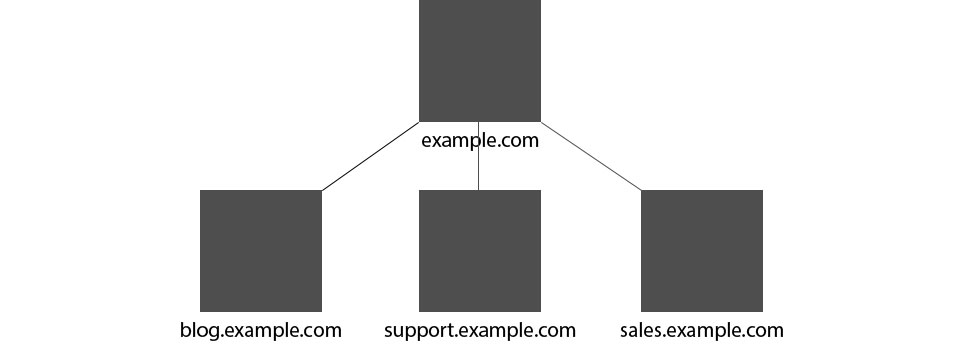There is sometimes confusion and contention when it comes to custom subdomains and SEO. The search engine implications of subdomains, however, have long been established, and have not been the subject of debate for quite some time. In this article, we’ll focus on search engine indexing and SEO benefit aspects of setting up a site with a subdomain.

What is a subdomain?
We need to define a few terms first as we don’t all speak technobabble. A subdomain is a location ‘under’ a domain where some files live.
This location may or may not be on the same hosting as your root domain.
The most common subdomain we all know and love is ‘www’. This is actually a subdomain of your root domain.
A subdomain can be a folder on your hosting – or a DNS (Domain Name System) record – pointing seekers to the specified folder and files found in another location.
These records are called CNAME, or canonical name, records. They allow you to setup an alphanumeric indicator of a DNS zone with your registrar.
What does that mean in plain English?
This means the letters or numbers that appear in the address bar before the website name you chose is a subdomain.
The CNAME is a kind of subdomain that lets you choose a human-friendly name for your robot-friendly setting. Hence, the name ‘custom subdomain’.
Are Custom Sub Domains indexable?
YES. Search engines index subdomains – this has been established. Google has addressed this subject in blog posts and even video stating that subdomain content is indexed with the root domain.
https://youtube.com/watch?v=_MswMYk05tk%3Frel%3D0
Still, a misconception exists that the algorithms employed by search engines give weight to the hosting location of content.
Again, this is a myth. Optimization for the crawlers then shifts to a focus on an arbitrary DNS issue rather than content. SEO optimization is great, but content is king.
What does that mean in plain English?
It means that subdomains are search engine indexable! Only humans care if the content is on the hosting of the root domain.
Search engine robots could not care less. If content is on a subdomain, it is spidered as part of the overall website. Just ask Google!
Why don’t robots care?
Robots are strictly logical machines. If you tell a robot your website files are on hosting A and there are more of your website files on hosting B, they’ll believe you and treat the content as if it were found on hosting A. Zone records such as A or C exist to route all visitors to specified locations.
Again, what does that mean in plain English?
Robots don’t think like humans, they simply follow the instructions given to them. That includes a record stating part of this website is located across multiple hostings.
Isn’t this all a bit of “DNS trickery”?
Nope, only humans see this as counter-intuitive. Robots see custom subdomains as a perfectly logical way to organize your website content.
In fact, custom subdomains are employed by lots of businesses, even Google.
This allows them to easily control and organize differing content. Common Google examples are maps.google.com, and of course mail.google.com, which are both Google-created content located across separate subdomains.
If you have any questions regarding best practices for setting up your website with a subdomain for use with IDX Broker, just let us know. Our dedicated Support Team is happy to help: (800) 421-9668





